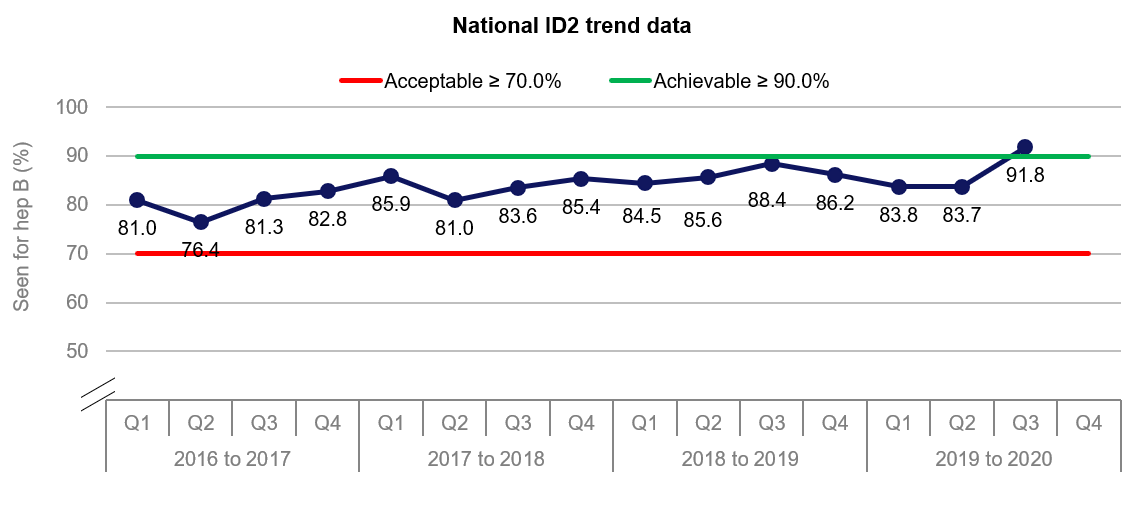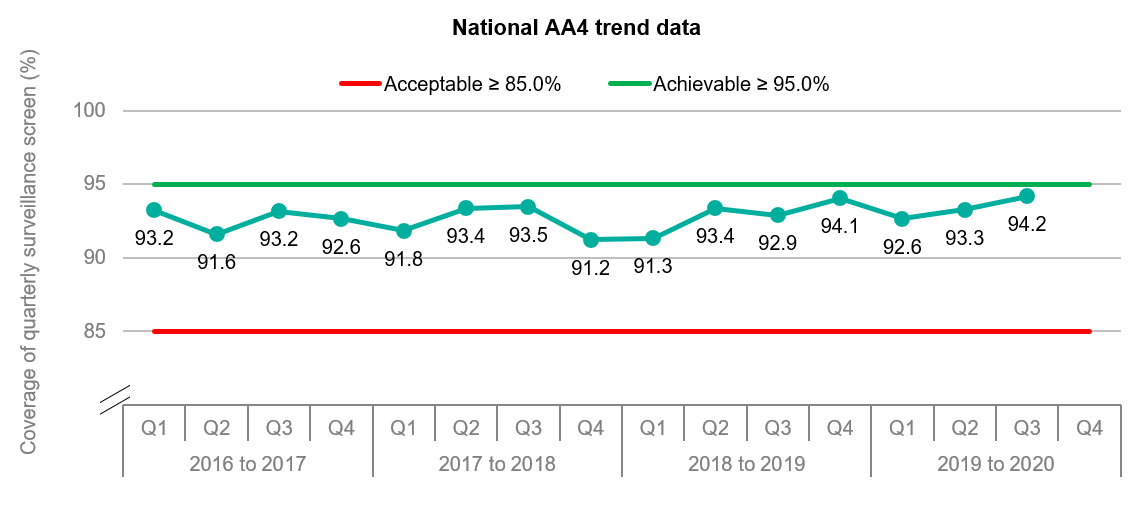
PHE Screening has now published the third set of quarterly 2019 to 2020 key performance indicator (KPI) data for the NHS screening programmes.
KPIs measure how the NHS screening programmes are performing and aim to give an overview of programme quality.
The latest data covers quarter 3 (Q3), 1 October to 31 December 2019. It is split into 2 publications, one for antenatal and newborn (ANNB) KPIs, and one for young person and adult (YPA) KPIs.
Data for a few of the KPIs is collected later than the others, so we have also updated the Q2 KPI data files for bowel cancer screening coverage (BCS2) and fetal anomaly ultrasound coverage (FA2).
ANNB data highlights
The NHS reached or remained at record highs of performance nationally in many of the ANNB KPIs in Q3 2019 to 2020.
These included the:
- infectious diseases KPIs for coverage (ID1, ID3 and ID4) at 99.8%
- infectious diseases KPI for timely assessment of women with hepatitis B (91.8%)
- sickle cell and thalassaemia KPI for coverage (ST1) at 99.8%
- KPI for coverage of the fetal anomaly ultrasound (FA2) at 99.2%

YPA data highlights
The NHS reached record highs of performance nationally for 2 of the YPA KPIs. In Q3 2019 to 2020 the abdominal aortic aneurysm (AAA) KPI for coverage of the quarterly surveillance screen (AA4) reached 94.2%, and in Q2 2019 to 2020 the bowel cancer screening KPI for coverage (BCS2) reached 61.6% (we collect BCS2 an extra quarter in arrears).

Summary factsheets report
The latest KPI summary factsheet report sits alongside the new data and includes:
- highlights of the data
- national trend information up to the most recent quarter available
- regional quarterly performance
You can use links in the report to easily find the KPI you are interested in. There are additional links at the top right hand side of each factsheet to take you back to the index.
PHE Screening blog
The PHE Screening blog provides up to date news from all NHS screening programmes. You can register to receive updates direct to your inbox, so there’s no need to keep checking for new blogs. If you have any questions about this blog article, or about population screening in England, please contact the PHE screening helpdesk.